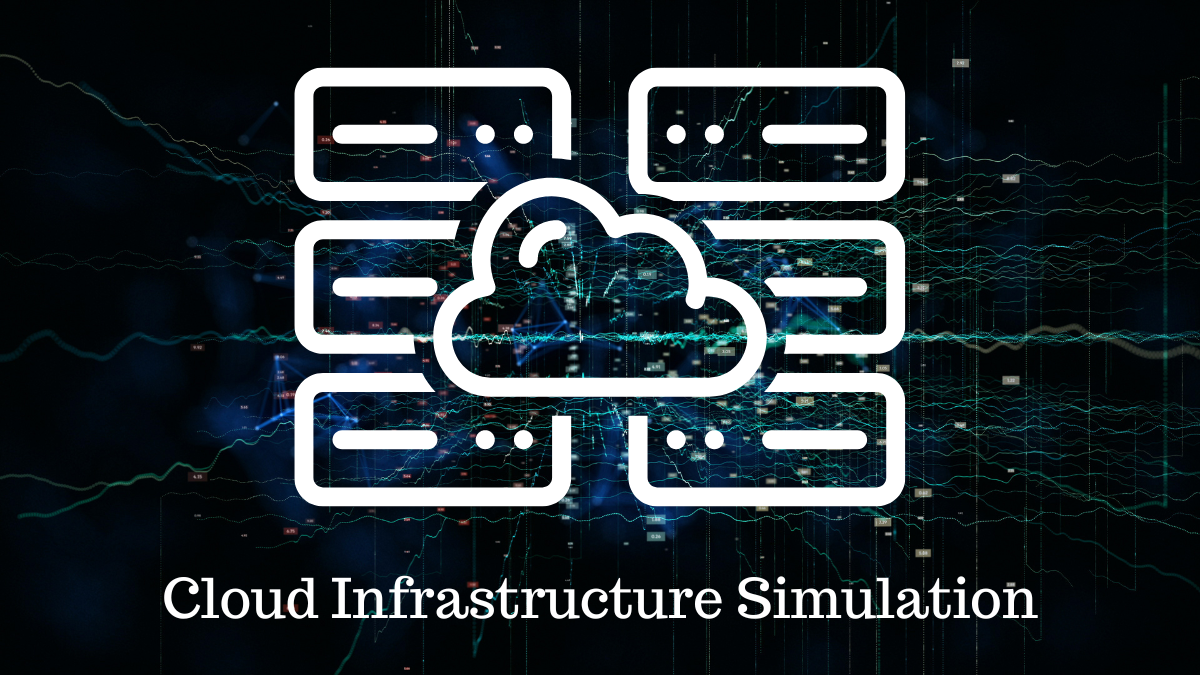Welcome to our latest blog post, in which we dive into the fascinating world of cloud computing simulation with CloudSim!
Whether you’re a researcher, developer, or cloud enthusiast, learning to simulate tasks in CloudSim can open up new avenues for optimizing cloud environments and applications.
Today, we’ll walk you through the process of simulating a task, known as a cloudlet, in CloudSim, making it simple and engaging.
Why Simulate Tasks in CloudSim?
CloudSim is a powerful cloud simulator tool designed for modelling and simulating cloud computing environments.
By simulating tasks (cloudlets), you can evaluate the performance of cloud resources, test different configurations, and optimize application deployment.
This can save time, reduce costs, and enhance the efficiency of your cloud solutions.
Step-by-Step Guide to Simulate a Task in CloudSim
Step 1: Set Up Your CloudSim Environment
Before you start simulating tasks, you must set up your CloudSim environment. Ensure you have the latest version of CloudSim downloaded and properly configured in your development setup. You can find the latest version on the official CloudSim GitHub project page.
Step 2: Create a CloudSim Project
Create a new project in your favourite integrated development environment (IDE), which is Eclipse. Include the necessary CloudSim libraries in your project to access all the cloud computing simulation functionalities.
import org.cloudbus.cloudsim.*;
import org.cloudbus.cloudsim.core.CloudSim;Step 3: Initialize the CloudSim Library
Initialize the CloudSim library. This step sets up the simulation environment.
int numUsers = 1;
Calendar calendar = Calendar.getInstance();
boolean traceFlag = false;
CloudSim.init(numUsers, calendar, traceFlag);Step 4: Define Data Centers and Hosts
Create data centers and hosts. Data centers provide the physical resources, while hosts are the individual machines within these centers.
Datacenter datacenter0 = createDatacenter("Datacenter_0");
DatacenterBroker broker = createBroker();
int brokerId = broker.getId();Step 5: Create Virtual Machines (VMs)
Define the characteristics of the virtual machines (VMs) that will run your cloudlets.
int vmid = 0;
int mips = 1000;
long size = 10000; // image size (MB)
int ram = 512; // vm memory (MB)
long bw = 1000;
int pesNumber = 1; // number of cpus
String vmm = "Xen"; // VMM name
Vm vm = new Vm(vmid, brokerId, mips, pesNumber, ram, bw, size, vmm, new CloudletSchedulerTimeShared());Step 6: Create Cloudlets (Tasks)
Define the tasks, known as cloudlets, to be simulated. Specify their characteristics such as length, file size, and output size.
int id = 0;
long length = 400000;
long fileSize = 300;
long outputSize = 300;
UtilizationModel utilizationModel = new UtilizationModelFull();
Cloudlet cloudlet = new Cloudlet(id, length, pesNumber, fileSize, outputSize, utilizationModel, utilizationModel, utilizationModel);
cloudlet.setUserId(brokerId);Step 7: Submit VMs and Cloudlets to the Broker
Submit the VMs and cloudlets to the broker to manage their execution.
broker.submitVmList(vmList);
broker.submitCloudletList(cloudletList);Step 8: Start the Simulation
Start the CloudSim simulation and print the results.
CloudSim.startSimulation();
List<Cloudlet> newList = broker.getCloudletReceivedList();
CloudSim.stopSimulation();
printCloudletList(newList);Step 9: Analyze the Results
Analyze the simulation results to understand the performance of your tasks (cloudlets) in the cloud environment. This can help you optimize resource allocation and task scheduling.
Conclusion
Simulating tasks in CloudSim is a powerful way to explore and optimize cloud computing environments. By following these steps, you can set up and run your own simulations, gaining valuable insights into the performance of your cloud applications. This process allows you to test various configurations, evaluate resource utilization, and identify potential bottlenecks before deploying your applications in a real cloud environment. With CloudSim, you can experiment with different scenarios, making data-driven decisions to enhance efficiency and reduce costs. Embrace the capabilities of this cloud research simulator to stay ahead in the rapidly evolving field of cloud computing.
What specific cloud computing scenarios or configurations are you most interested in simulating with CloudSim? Let me know in the comments so that we can discuss this.
Stay tuned for more CloudSim tutorials and tips on cloud computing and simulation tools. Happy simulating!
Don’t forget to subscribe to our blog for more insights and updates on cloud computing, CloudSim tool tutorials, and the latest tech trends. Follow us on social media and join our newsletter for exclusive content and tips!
You may also look at our self paced course named. “Essential Cloudsim Tutorials” available on Udemy



